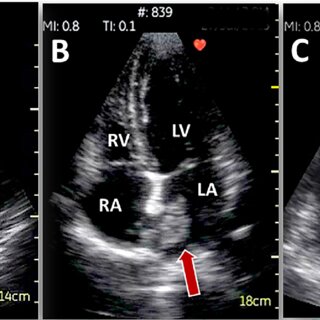Maintaining a healthy heart begins with understanding how it works and identifying potential concerns early. An echocardiogram is a powerful, non-invasive tool that closely examines heart health, helping healthcare professionals detect potential issues early and provide the best care possible. Here, we’ll explore what an echocardiogram is, the conditions it can identify, and when you might schedule one.
What Is an Echocardiogram and How Does It Work
An echocardiogram is a diagnostic imaging test that uses sound waves to create detailed pictures of your heart. It enables healthcare professionals to observe your heart’s structure, function, and movement in real-time. A handheld device called a transducer is placed on your chest or other areas during the procedure. This device emits high-frequency sound waves that bounce off your heart, creating live images. These images provide information about your heart’s chambers, valves, and blood flow. Since the procedure is radiation-free and non-invasive, an echocardiogram offers a safe and relatively quick way to gain valuable insights into heart health without causing discomfort.
Which Heart Conditions Can an Echocardiogram Detect Early
Echocardiograms are tools in recognizing potential heart conditions before they become significant issues. While they don’t provide definitive medical diagnoses, they serve as an early alert system for your healthcare provider to evaluate further. Conditions an echocardiogram might help detect include:
- Heart valve issues, such as stenosis or regurgitation.
- Irregular blood flow patterns that may signal structural abnormalities.
- Congenital heart defects that may need monitoring from a young age.
- Heart muscle problems, including reduced pumping ability or thickened walls.
- Fluid around the heart (pericardial effusion), which can indicate inflammation or infection.
Early detection of these conditions can empower your doctor to recommend preventive measures or further testing, giving you the time and information needed to protect your heart.
When Should You Get an Echocardiogram?
There’s no one-size-fits-all answer, but several scenarios could prompt a healthcare provider to recommend an echocardiogram. This might include experiencing symptoms such as chest pain, shortness of breath, or irregular heartbeats. It may also be suggested if your medical history includes heart valve issues, high blood pressure, or previous heart disease.
An echocardiogram may be used to monitor ongoing heart conditions or assess recovery after heart surgery. Discuss your concerns with a healthcare provider, even if your symptoms are mild or occasional. Doing so could lead to the early detection of potential problems and establish timely treatment, helping to protect your heart health.
How Does an Echocardiogram Compare to Other Heart Tests?
Echocardiograms stand out for their ability to provide detailed, real-time images of the heart without invasive procedures. Here’s how they compare to other common tests:
- Electrocardiogram (ECG): While ECGs measure the electrical activity of the heart, echocardiograms show its structure and movement in real-time.
- Stress Test: Often used alongside echocardiograms, stress tests focus on how the heart performs under physical exertion.
- CT or MRI Scans: Although these provide static images of your heart and surrounding areas, they lack the live-motion aspect of an echocardiogram.
Each test has unique strengths, and a healthcare provider may recommend a combination to get the clearest understanding of your heart health.
Schedule a Visit Today
Your heart health is a pivotal part of your overall well-being. Whether you’re experiencing symptoms or simply want to take preventative measures, an echocardiogram can play a key role in safeguarding your cardiovascular health. Speak with your healthcare provider about whether this test is right for you.
- EA Fitness – Transform Your Health Today!
- Why Is Mental Health Important – Transform Your Life By Prioritizing It!
- How To Improve Gut Health – Boost Digestion, Energy & Immunity!
- Is Coffee Beneficial To Health – Expert Insights You Can’t Afford To Miss!
- TimesHealthMage Diet Plans For Diabetics – Manage Blood Sugar The Smart Way!


Leave a Reply